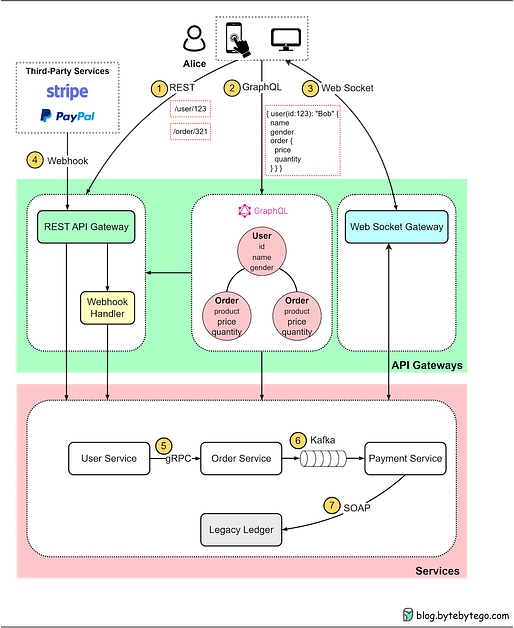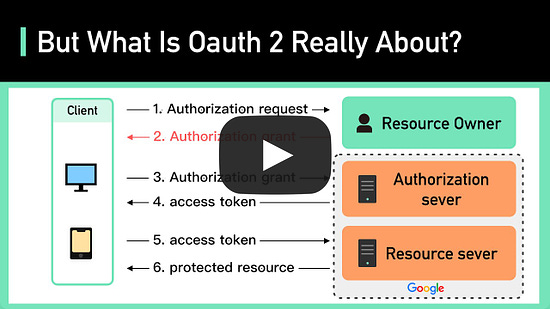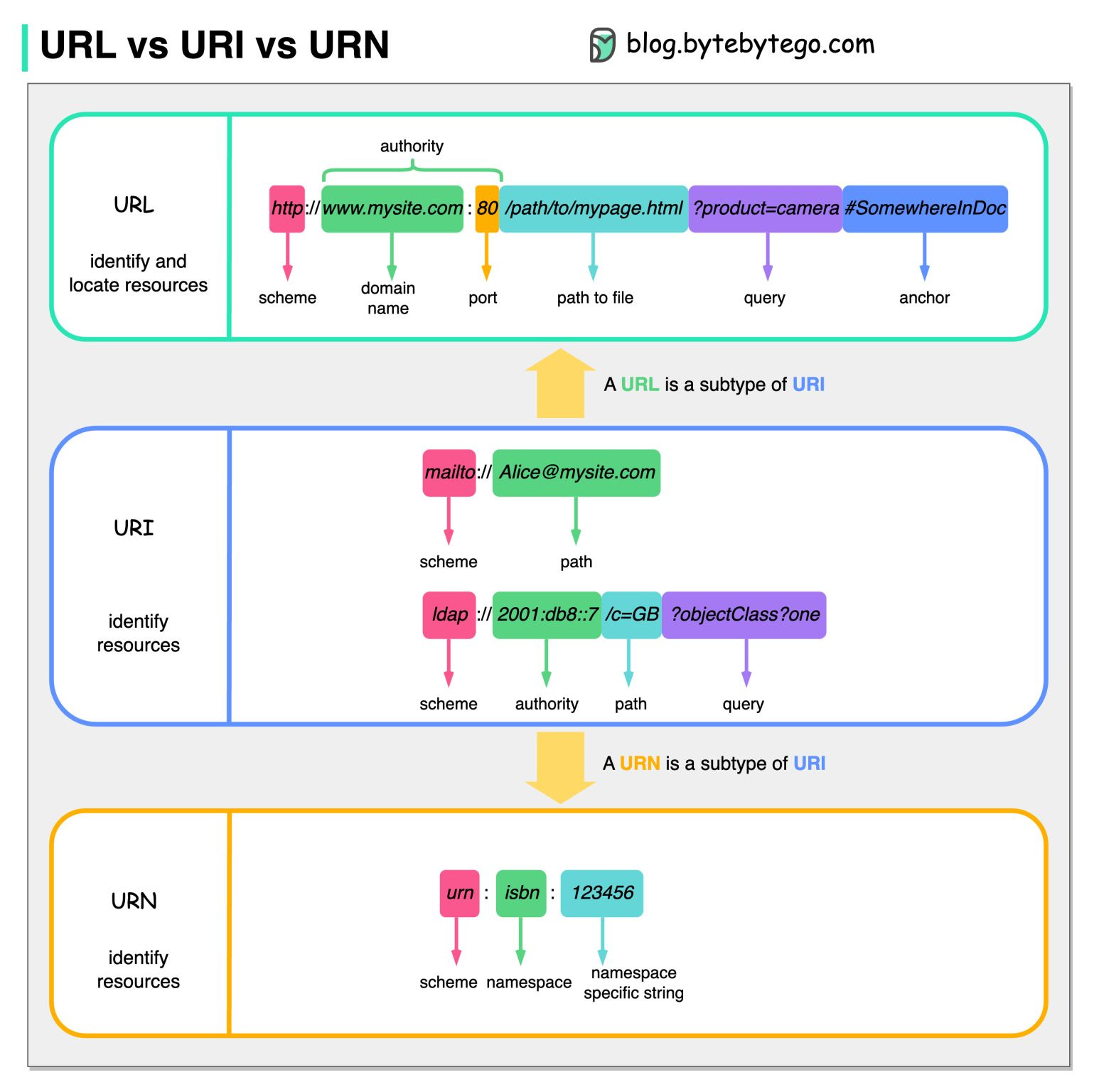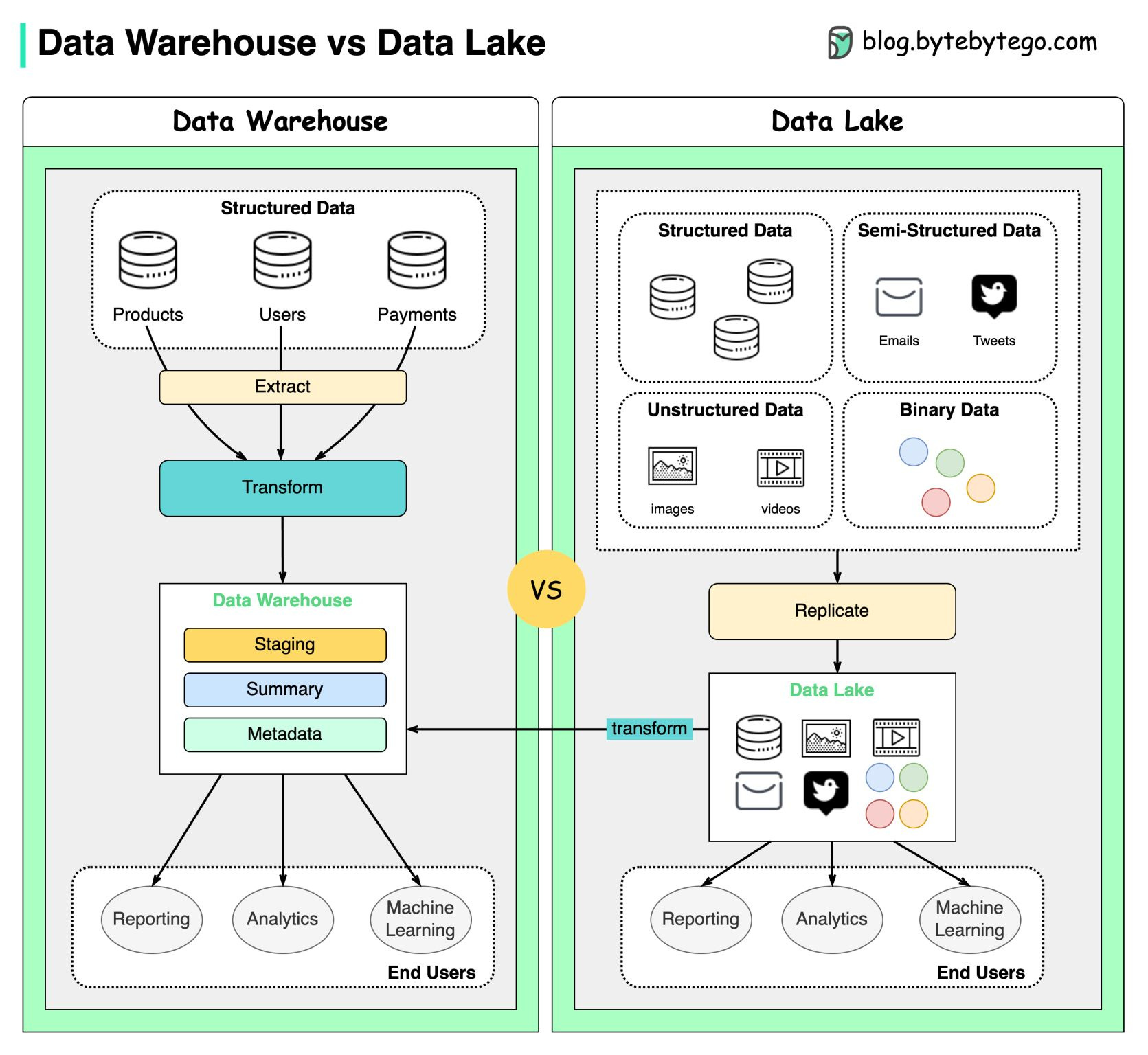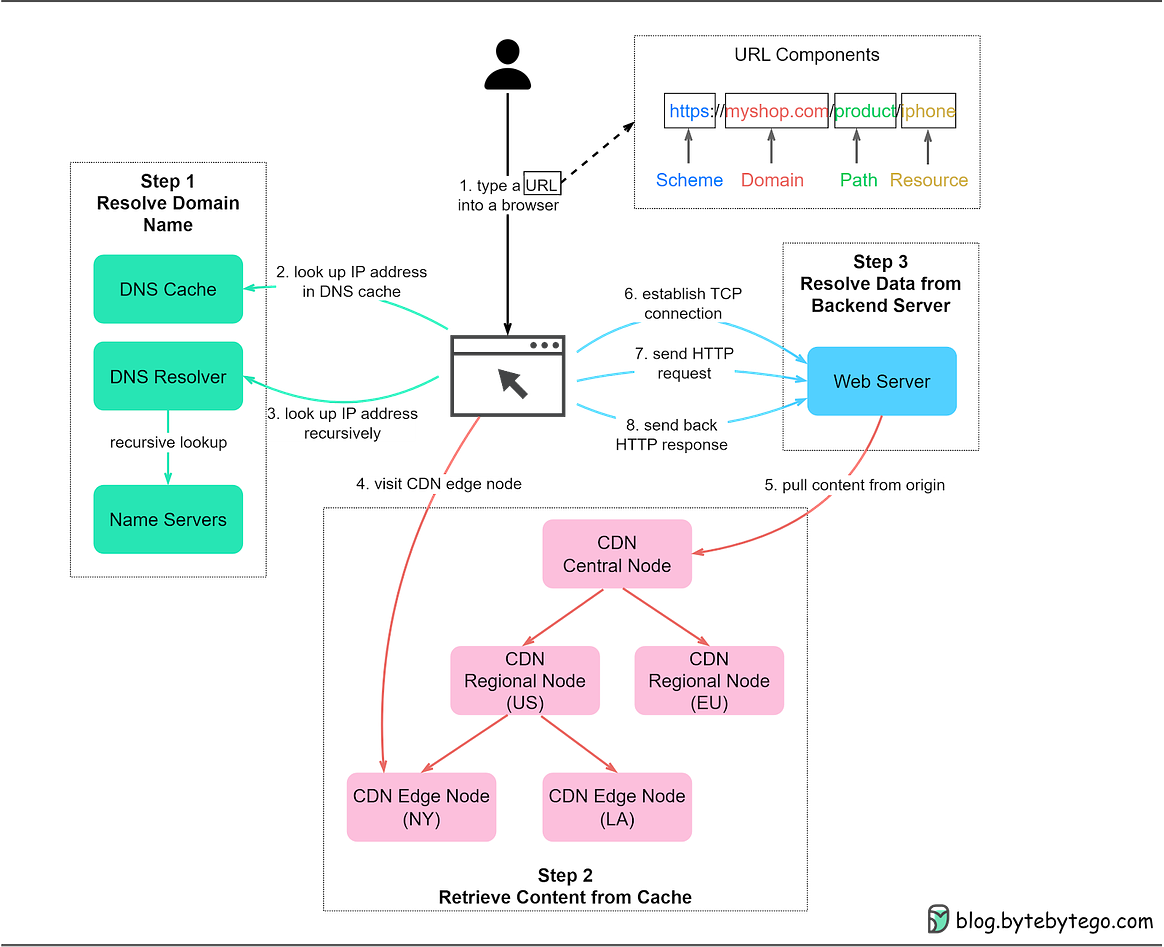Archives
- By thread 5341
-
By date
- June 2021 10
- July 2021 6
- August 2021 20
- September 2021 21
- October 2021 48
- November 2021 40
- December 2021 23
- January 2022 46
- February 2022 80
- March 2022 109
- April 2022 100
- May 2022 97
- June 2022 105
- July 2022 82
- August 2022 95
- September 2022 103
- October 2022 117
- November 2022 115
- December 2022 102
- January 2023 88
- February 2023 90
- March 2023 116
- April 2023 97
- May 2023 159
- June 2023 145
- July 2023 120
- August 2023 90
- September 2023 102
- October 2023 106
- November 2023 100
- December 2023 74
- January 2024 75
- February 2024 75
- March 2024 78
- April 2024 74
- May 2024 108
- June 2024 98
- July 2024 116
- August 2024 134
- September 2024 130
- October 2024 141
- November 2024 171
- December 2024 115
- January 2025 216
- February 2025 140
- March 2025 220
- April 2025 233
- May 2025 239
- June 2025 303
- July 2025 154
-
[Online workshop] How to Master Software Remediation using New Relic Vulnerability Management
New Relic
 Register for this online workshop, "How to Master Software Remediation using New Relic Vulnerability Management" on 20th July at 2 PM BST/ 3 PM CEST to get a comprehensive introduction to New Relic Vulnerability Management. Applications today often consist of thousands of components, each with the potential to carry critical security vulnerabilities.Mitigating threats is no longer the sole responsibility of security teams, it is a shared responsibility of all engineers to have a security mindset across the development pipeline.
Register for this online workshop, "How to Master Software Remediation using New Relic Vulnerability Management" on 20th July at 2 PM BST/ 3 PM CEST to get a comprehensive introduction to New Relic Vulnerability Management. Applications today often consist of thousands of components, each with the potential to carry critical security vulnerabilities.Mitigating threats is no longer the sole responsibility of security teams, it is a shared responsibility of all engineers to have a security mindset across the development pipeline.
In this practical session, you’ll find out about how New Relic vulnerability management lets you see and fix security issues in one connected experience with zero configuration, open integrations, automatic risk prioritization, and alerting on newly discovered vulnerabilities across all teams (Dev, Ops, Sec).
With this online workshop, you’ll get to:
- Learn three best practices to adopt that can help improve secure code quality.
- How New Relic Vulnerability Management empowers your engineers to understand their application security
- How it works and how to get it technically (Agent upgrade)
Register now Need help? Let's get in touch. 

 This email is sent from an account used for sending messages only. Please do not reply to this email to contact us—we will not get your response.
This email is sent from an account used for sending messages only. Please do not reply to this email to contact us—we will not get your response.View in browser
This email was sent to info@learn.odoo.com. Update your email preferences.For information about our privacy practices, see our Privacy Policy.
Need to contact New Relic? You can chat or call us at +44 20 3859 9190
Strand Bridge House, 138-142 Strand, London WC2R 1HH
© 2023 New Relic, Inc. All rights reserved. New Relic logo are trademarks of New Relic, Inc.
by "New Relic" <emeamarketing@newrelic.com> - 07:06 - 6 Jul 2023 -
Load Monitoring Software designed to monitor and optimize the load weight on fleets for different Industries.
Load Monitoring Software designed to monitor and optimize the load weight on fleets for different Industries.
A comprehensive solution ensuring compliance, safety, and operational efficiency of drivers.
Efficiently monitor and optimize load weight, distribution, and progress in real-time
Use Cases Across Industries
Logistics
Relying on manual estimation or guesswork for load weight and distribution poses risks of errors and safety hazards. The solution of installing load sensors, implementing centralized monitoring software for real-time data analysis, and generating alerts for weight limit violations, ensured accurate load management
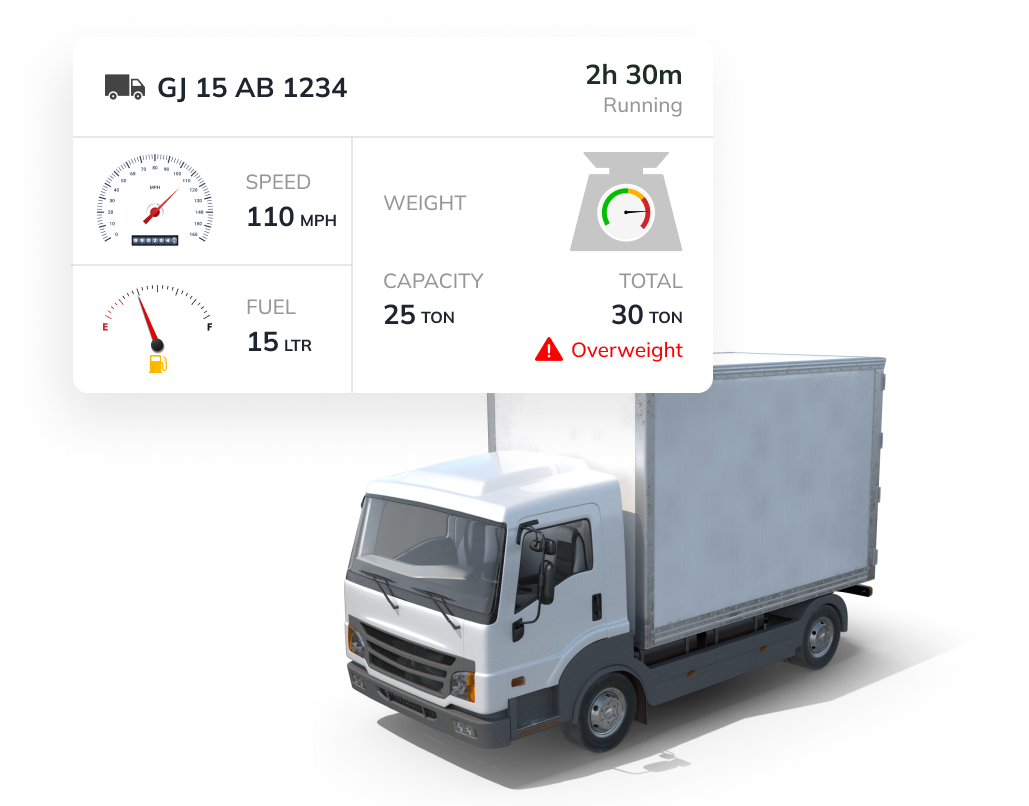
Waste collection
The challenges in waste collection were underutilized vehicles, overfilled containers, and inaccurate billing. To address these issues, the solution involved the installation of load sensors on waste collection vehicles, and monitoring software. These optimized routes are based on real-time fill-level data, and they generate alerts to prevent overfilling.
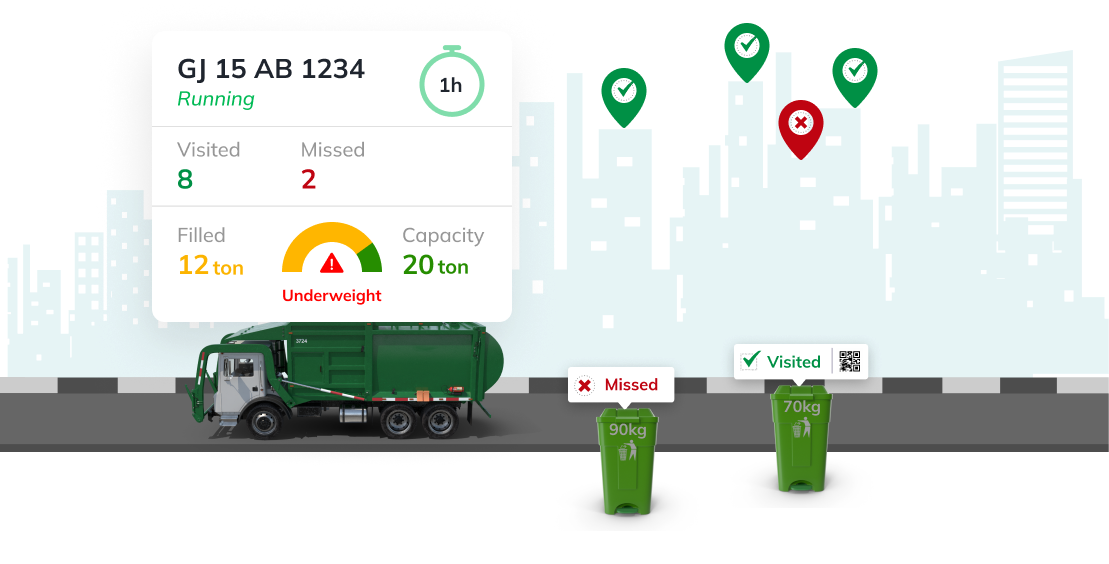
Construction
A construction company implemented load monitoring software to address challenges in weight compliance, load distribution optimization, and real-time tracking. The software ensured legal weight limits, optimized load distribution, provided live tracking, generated alerts, and stored historical data for analysis and decision-making.

Discuss your use-case to get your business growing

Uffizio Technologies Pvt. Ltd., 4th Floor, Metropolis, Opp. S.T Workshop, Valsad, Gujarat, 396001, India
by "Sunny Thakur" <sunny.thakur@uffizio.com> - 12:30 - 6 Jul 2023 -
Never too tired to make a sale, generative AI is reshaping marketing at lightning speed
On Point
Six ‘no regrets’ AI strategies
by "McKinsey On Point" <publishing@email.mckinsey.com> - 10:05 - 5 Jul 2023 -
Private markets’ bumpy ride—and what it means for 2023
Re:think
Analyzing private markets 
ON PRIVATE MARKETS
Lessons from private markets’ up-and-down year
John SpiveyEarlier this spring, McKinsey’s Global Private Markets Review—our flagship report examining private-markets data from the previous year—told a tale of two halves. There was a robust first half of the year, and a second half during which it often felt like the sky was falling. As the Federal Reserve started increasing interest rates to fight inflation, debt became both more expensive and more difficult to obtain. This development, combined with the decline in public markets, put downward pressure on deal volume, fundraising, and valuations in the private markets.
Many of these trends persisted through the first half of 2023 and may continue to shape the market going forward. That’s why a retrospective report like ours can be instructive for managers and investors making strategic decisions. The report is intended to help private-market players evaluate the trends that shape private markets and make more informed strategic, operational, and portfolio-related decisions.
Our review revealed several notable highlights, along with some surprises. Private-markets fundraising declined 11 percent from 2021, falling to $1.2 trillion. Many institutional investors were affected by the denominator effect, whereby falling public-market allocations increased the relative weight of their private-market holdings. Dealmaking also declined as financing alternatives became less attractive and valuations less certain, with 2022 private equity volumes down 26 percent from the prior year.
Surprisingly, however, 2022 was still the second-best year ever for both fundraising and deal volume, according to our analysis. Why was activity so strong, especially in what felt like such a challenging year? The simplest explanation is that “tale of two halves.” While the market slowed dramatically in the second half of 2022—which was one of the slowest dealmaking environments of the past several years—the frenetic pace in the first half of the year had already ensured robust full-year tallies.“2022 was a ‘tale of two halves’: there was a robust first half of the year, and a second half during which it often felt like the sky was falling.”
Highlights among asset classes and strategies include private debt and infrastructure fundraising, which gained 2.1 percent and 6.5 percent, respectively, even as private markets’ two largest asset classes—private equity and real estate—saw year-over-year double-digit fundraising declines. The relative success of these two strategies amid market turmoil is partly the result of their stability: of the private-asset classes, debt and infrastructure tend to have the lowest performance volatility and greatest degree of inherent downside protection. The pace of inquiries we have had from companies interested in launching or expanding into these asset classes has picked up noticeably in the past six to 12 months.
Sustainable investing thrived in 2022, buoyed by the energy transition and new government policies, including the US Inflation Reduction Act. Fundraising that focused on environmental, social, and governance initiatives totaled $24 billion in the first half of the year, already almost as much as the previous full-year record of $28 billion. And sustainability-related investments increased by 7 percent to nearly $200 billion, a new record, proving resilient to the dealmaking headwinds affecting private markets overall.
In the first half of 2023, we saw a different market sentiment emerge as private-market players adapted to the realities of the new environment that took hold in the past year. Managers are establishing new financing relationships and updating value creation assumptions to account for the reality that debt is more than 50 percent more expensive than it was a year ago. Sellers and buyers are gradually adjusting expectations on asset prices (though this process is far from complete). And general partners are adjusting fundraising expectations and approaches to account for the fact that limited partners plan to commit less capital to private markets this year.ABOUT THE AUTHOR
John Spivey is an associate partner in McKinsey’s Charlotte office.
MORE FROM THIS AUTHOR
UP NEXTAngelika Reich on the employee experience
Employees of all ages value many of the same benefits of their organizations’ workplaces, but a one-size-fits-all approach isn’t the answer. Meaningful investments and a nuanced approach to the work experience can help companies keep people engaged.
This email contains information about McKinsey’s research, insights, services, or events. By opening our emails or clicking on links, you agree to our use of cookies and web tracking technology. For more information on how we use and protect your information, please review our privacy policy.
You received this email because you subscribed to our McKinsey Quarterly alert list.
Copyright © 2023 | McKinsey & Company, 3 World Trade Center, 175 Greenwich Street, New York, NY 10007
by "McKinsey Quarterly" <publishing@email.mckinsey.com> - 02:11 - 5 Jul 2023 -
TBS 2023 Attendees Email Contact List
Hi,
This is regarding The Business Show - TBS 2023 Attendees Email Contact List.
List includes: Contact Name, Job Title, Company/Business Name, email, Website/URL, Revenue, Employee Size, SIC Code etc.,
If you are interested just reply back as “Send Counts and Cost".
Looking forward for your email.
Regards,
Erica jonathan
Trade Show Specialist.
by "Erica.Jonathan" <erica.jonathan@mktindustrylisting.com> - 05:52 - 5 Jul 2023 -
Where is the world economy heading? See the key trends.
On Point
Our Global Economics Intelligence report Brought to you by Liz Hilton Segel, chief client officer and managing partner, global industry practices, & Homayoun Hatami, managing partner, global client capabilities
• US inflation cools. The pace of inflation in the US slowed to 4.0% in May 2023, its lowest point in two years (after spiking to 9.1% in June 2022), government data reveals. Decreasing energy prices and a small uptick in food costs contributed to the decline. Some economists are keeping a close eye on housing inflation; costs related to housing went up 0.6% in May. Current conditions are “encouraging,” but the US might still experience an economic slowdown, albeit a delayed one, a chief economist said. [FT]
• Inflation still top of mind. Central banks across the world are looking to maintain interest rate interventions in the hopes of tempering inflation rates. In many regions and countries, inflation continues to moderate but generally remains high. Interest rates and sentiment are weighing on growth projections, and the picture is somewhat patchy, explain Sven Smit, McKinsey’s chair of insights and ecosystems and chair of the McKinsey Global Institute, and colleagues. Growth in some emerging economies such as China and India are outpacing developed economies.
• Uneven growth. In advanced economies, inflation in the US has declined, partly due to falling energy prices. Energy prices also came down in the eurozone, although food prices remain high, and experts believe the UK may be able to avoid a recession in 2023. Meanwhile, India is set to contribute around 15% to global growth, making it one of the world’s fastest-growing economies. Dive deeper into McKinsey’s macroeconomic data and analysis of the world economy to understand key global trends and risks.
— Edited by Gwyn Herbein, editor, Atlanta
This email contains information about McKinsey's research, insights, services, or events. By opening our emails or clicking on links, you agree to our use of cookies and web tracking technology. For more information on how we use and protect your information, please review our privacy policy.
You received this email because you subscribed to the On Point newsletter.
Copyright © 2023 | McKinsey & Company, 3 World Trade Center, 175 Greenwich Street, New York, NY 10007
by "McKinsey On Point" <publishing@email.mckinsey.com> - 12:47 - 5 Jul 2023 -
ขอแสดงความยินดีกับผู้ชนะกิจกรรม ตอบคำถามนวัตกรรมเพื่อความยั่งยืนฯ
Schneider Electric
ขอบคุณที่ร่วมสนุกกับเรา!ชไนเดอร์ อิเล็คทริค ขอแสดงความยินดีกับผู้ชนะ ร่วมสนุกตอบคำถามกิจกรรม ตอบคำถามนวัตกรรมเพื่อความยั่งยืน
ตรวจสอบรายชื่อผู้โชคดีรับคูปอง Grab มูลค่า 50 บาท คลิกปุ่มด้านล่างเลยติดตามบรรยากาศผ่านทางออนไลน์สำหรับผู้ที่ไม่สามารถเข้าร่วมงาน ณ สถานที่จัดงานได้ ท่านสามารถเข้าร่วม Innovation Summit Bangkok 2023 ของเราในรูปแบบ Virtual เปิดให้เข้าร่วมออนไลน์ เฉพาะวันที่ 5 กรกฏาคม 2023 แบบเรียลไทม์
+ Lifecycle Services From energy and sustainability consulting to optimizing the life cycle of your assets, we have services to meet your business needs. Schneider Electric
46 Rungrojthanakul Building. 1st, 10th, 11th Floor, Ratchadapisek Road. Huaykwang
Bangkok - 10310, Thailand
Phone +662 617 5555© 2023 Schneider Electric. All Rights Reserved. Schneider Electric is a trademark and the property of Schneider Electric SE, its subsidiaries and affiliated companies. All other trademarks are the property of their respective owners.
by "Schneider Electric" <reply@se.com> - 09:01 - 4 Jul 2023 -
Re: Fwd: You have a new form submission on your Webflow site!
Hello,Thank you for leaving an inquiry on the website!Great to e-meet you.Please answer the following questions to get more clarity on your data request:- What is the use-case?
- Which countries?
- Which data fields are essential?
- What is your current timeline?
Looking forward to your response.Best regards,GilOn 07/04/2023 12:04 PM EDT info <info@techsalerator.com> wrote:---------- Original Message ----------From: Webflow Forms Webflow Forms <no-reply-forms@webflow.com>To: info@techsalerator.comDate: 07/02/2023 1:14 AM EDTSubject: You have a new form submission on your Webflow site!You just got a form submission!
Form
Email Form
Site
Techsalerator
Submitted content
Email: info@learn.odoo.com
by "Gil Domb" <gil@techsalerator.com> - 12:40 - 4 Jul 2023 -
Monitoring software shouldn’t be hard.
New Relic
 Without a complete picture of application performance, incidents can catch you off guard—and fixing them can take uncomfortably long. Using distributed tracing in New Relic APM gives you that complete picture, so your team can have the answers they need to stay a step ahead.
Without a complete picture of application performance, incidents can catch you off guard—and fixing them can take uncomfortably long. Using distributed tracing in New Relic APM gives you that complete picture, so your team can have the answers they need to stay a step ahead.
With distributed tracing, teams can:-
Trace the path of a request as it travels across a complex system.
-
Understand where bottlenecks are occurring in the request path.
-
See and analyze where errors happen in the transaction at the individual service level.
Learn more Need help? Let's get in touch.



This email is sent from an account used for sending messages only. Please do not reply to this email to contact us—we will not get your response.
This email was sent to info@learn.odoo.com Update your email preferences.
For information about our privacy practices, see our Privacy Policy.
Need to contact New Relic? You can chat or call us at +44 20 3859 9190.
Strand Bridge House, 138-142 Strand, London WC2R 1HH
© 2023 New Relic, Inc. All rights reserved. New Relic logo are trademarks of New Relic, Inc
Global unsubscribe page.
by "New Relic" <emeamarketing@newrelic.com> - 07:11 - 4 Jul 2023 -
-
Time is Running Out | Sign up for the oneAPI DevSummit for HPC & AI, Southeast Asia 2023
Time is Running Out | Sign up for the oneAPI DevSummit for HPC & AI, Southeast Asia 2023
Immerse yourself in this free one-day virtual event focused on cross-platform development and future technologies.
Register now 
oneAPI DevSummit for HPC & AI, Southeast Asia 2023
August 03, 9:00 am - 5:00 pm IST



Register now 
Save the date! The oneAPI DevSummit for HPC & AI, Southeast Asia 2023 returns on August 03 with all new topics, speakers, case studies and the latest developments on oneAPI. This one-day virtual event is dedicated to innovative cross-platform solutions developed on oneAPI—a unified, standards-based programming model that delivers uncompromised performance on diverse workloads.
Register today and stand in a chance to win some amazing Prizes and Giveaways at the event :
- First 50 Early Bird prizes
- Event giveaways - Amazon and Starbucks Vouchers
- Lucky dip prizes for engagement at the summit
Save your virtual spot 
Whether you attended a previous DevSummit or if this is your first time participating, this summit will offer you a chance to hear from industry and academic experts to connect and network with other innovators.
Explore more 
Additionally, you’ll get to experience an expansive keynote, techtalks, live tutorials, and a perspective on cross-architecture computing to catapult you to the next level in your developer journey.
View all speakers 
We hope to see you on August 03, 2023, for the Virtual Conference.





If you forward this email, your contact information will appear in any auto-populated form connected to links in this email.
This was sent to info@learn.odoo.com because you are subscribed to Events & Tradeshows. To view and manage your marketing-related email preferences with Intel, please click here.
© 2023 Intel Corporation
Intel Corporation, 2200 Mission College Blvd., M/S RNB4-145, Santa Clara, CA 95054 USA. www.intel.comPrivacy | Cookies | *Trademarks | Unsubscribe | Manage Preferences
by "Intel Software Developer Zone" <intel@plan.intel.com> - 01:37 - 4 Jul 2023 -
Load Monitoring Software that gives real-time insights for optimal load management on your vehicle.
Load Monitoring Software that gives real-time insights for optimal load management on your vehicle.
A comprehensive solution ensuring compliance, safety, and operational efficiency of drivers.Harness the power of realtime insights for optimal load management, Enhanced efficiency, and regulatory compliance.
Catch a Glimpse of What Our Software Has to Offer
Instant Alerts
- Overweight and underweight
- Geofence
Notifies fleet managers when a load exceeds or falls below the recommended weight range.
Triggers when a vehicle carrying a load enters or exits predefined geographical boundaries or specific locations.

Insightful Reports and Charts
- Loading unloading summary
- Performance Trend Chart
These reports provide an overview of all the loads handled within a specified time period.
This chart tracks and presents load performance metrics over time, such as average loading/unloading times, turnaround times, or on-time delivery rates.

Learn how our load monitoring software can help your business grow.

Uffizio Technologies Pvt. Ltd., 4th Floor, Metropolis, Opp. S.T Workshop, Valsad, Gujarat, 396001, India
by "Sunny Thakur" <sunny.thakur@uffizio.com> - 12:30 - 4 Jul 2023 -
Order
Dear Sir/Ma,
I am sending this email on behalf of the Sudanese Revolutionary Front (SRF),
I am inquiring if your company can supply Toyota Hilux Vehicles to our revolutionary movement in sudan.We shall make upfront payment before the supply.
You don’t have to send shipment directly to Sudan. The shipment could be sent to Port Massawa Eritrea, and we shall handle the rest ourselves to Sudan.
Let me hear from you.
Regards,
Col. Wahid Yusuf.
Email: colyusufwahid@yandex.
com Sudanese Revolutionary Front (SRF)
by "Yusuf wahid" <colyusufwahid@getnada.com> - 03:09 - 3 Jul 2023 -
Explore Our Exciting Loan Offers Today!
Hello, Do you need a loan for any purpose? Contact us today for a fast and reliable loan with an interest rate of 2%. Do not miss this opportunity! Regards Boove Funding Company ================================================================= =================== Bonjour, Avez-vous besoin d'un prêt pour quelque raison que ce soit ? Contactez-nous dès aujourd'hui pour un prêt rapide et fiable avec un taux d'intérêt de 2 %. Ne manquez pas cette occasion! Cordialement Boove Finance Company
by "Boove-Funding" <user@sportsballphotographer.com> - 03:40 - 3 Jul 2023 -
The sharper edge: A leader’s guide to competitive advantage
Stand out Brought to you by Liz Hilton Segel, chief client officer and managing partner, global industry practices, & Homayoun Hatami, managing partner, global client capabilities
Companies can distinguish themselves in many ways. Besides such classic differentiators as cost or products, today’s competitive advantages can come from a variety of sources, such as new business models, disruption, culture, and technology. But in a highly competitive environment, finding a “superpower” and nurturing it may require the entire organization to pitch in, with visionary leadership at every level. This week, we explore some effective practices to build and sustain what makes your organization unique.
Few business leaders can afford to ignore this game-changing technology. In the view of McKinsey experts, “CEOs should consider exploration of generative AI a must, not a maybe. Generative AI can create value in a wide range of use cases.... The downside of inaction could be quickly falling behind competitors.” Options range from deploying specific generative-AI features on a smaller scale to implementations that can transform entire businesses. For example, one company uses an off-the-shelf generative-AI coding tool to improve productivity, whereas another has built and trained a foundation model from scratch to accelerate scientific research—a high-cost, resource-intensive process. To organize for generative AI, it may be best to start by convening a cross-functional group of the company’s leaders to identify and prioritize where the technology could generate the most value.
That’s the number of capabilities that companies need to build to outperform the competition, according to McKinsey senior partners Eric Lamarre, Kate Smaje, and Rodney Zemmel. In their new book, Rewired: The McKinsey Guide to Outcompeting in the Age of Digital and AI, the authors discuss what it takes for leaders to spark transformation across all six capabilities. A key step involves adopting a new operating model that brings business, technology, and operations closer together. “The shift to a new operating model is the signature move of CEOs in rewiring the company,” say the authors. “Only they can catalyze such large-scale organizational change.”
That’s McKinsey senior partner Carolyn Dewar and colleagues on how continuous-improvement practices can deliver a competitive edge for organizations. “Sometimes those improvements are big, often they are small,” say the McKinsey experts. “But what’s most important is they’re frequent.” For example, to increase performance transparency—an essential practice for continuous improvement—one company tracked capital asset utilization across different areas of its operations. Finding many assets that were poorly utilized, the teams that were using them channeled their energies into making the assets more productive—generating a 20 percent productivity leap in less than two months.
“I honestly believe that culture is a critical competitive weapon,” says Harvard Business School professor emeritus James Heskett in a discussion with McKinsey. But few leaders take the time to create a strong organizational culture. “We all agree that we need to address it, but it takes too long to do it,” Heskett says. “It’ll probably have to be handed off to some other leader.” Culture may be even more difficult to nurture in a hybrid environment where people in different geographic locations and work settings need to work together productively. In such cases, “An effective culture will ensure that there is adequate advocacy, that there is the right amount of face-to-face contact, and that certain really important values come to the fore: inclusion and voice,” says Heskett.
Corporate culture can be a major competitive advantage, but it can be hard to define. As the author of an Economist article puts it, “There is no substitute for being at a firm day in, day out, if you want to understand what it is really like.” One person’s idea of a good culture may be Ping-Pong tables and catered lunches, whereas another may prefer an inspiring mission statement. But most leaders would agree that a large part of building a robust culture lies in creating shared values and beliefs that govern how the organization works. This strategy has worked for smart-energy company Tibber, which credits much of its rapid growth to its sense of purpose. “At our core, I think all humans yearn for that,” says chief technology officer Richard Eklund in a McKinsey interview. “I feel we’ve arrived at an inflection point where purpose is becoming even more important than compensation.”
Lead with a competitive edge.
— Edited by Rama Ramaswami, senior editor, New York
Share these insights
Did you enjoy this newsletter? Forward it to colleagues and friends so they can subscribe too. Was this issue forwarded to you? Sign up for it and sample our 40+ other free email subscriptions here.
This email contains information about McKinsey’s research, insights, services, or events. By opening our emails or clicking on links, you agree to our use of cookies and web tracking technology. For more information on how we use and protect your information, please review our privacy policy.
You received this email because you subscribed to the Leading Off newsletter.
Copyright © 2023 | McKinsey & Company, 3 World Trade Center, 175 Greenwich Street, New York, NY 10007
by "McKinsey Leading Off" <publishing@email.mckinsey.com> - 02:19 - 3 Jul 2023 -
What potential paths could the global economy take from now to 2030?
On Point
New research from McKinsey Global Institute Brought to you by Liz Hilton Segel, chief client officer and managing partner, global industry practices, & Homayoun Hatami, managing partner, global client capabilities
• A fragile recovery. The world economy is expected to make a tenuous recovery in 2023 and 2024 as inflation and elevated interest rates continue to affect banking, consumer spending, and growth, according to the OECD. Although the economy is improving, risks abound, including the ongoing war in Ukraine and rising debt in developing nations. Global GDP is now projected to grow 2.7% in 2023, a 0.5% increase from the OECD’s previous forecast. Economies in Asia—including China, India, and Singapore—will fuel much of that growth. [AP]
• It’s one thing on paper. Asset price inflation over the past two decades created about $160 trillion in wealth—on paper. At the same time, economic growth was sluggish, inequality rose, and every $1.00 in investment ended up generating $1.90 in debt. With recent turbulence in the banking sector and heightened geopolitical tensions, conditions have changed from the years of loose money and seemingly endless increases in wealth, according to Sven Smit, McKinsey’s chair of insights and ecosystems and of the McKinsey Global Institute, and colleagues.
— Edited by Katherine Tam, editor, New York
This email contains information about McKinsey's research, insights, services, or events. By opening our emails or clicking on links, you agree to our use of cookies and web tracking technology. For more information on how we use and protect your information, please review our privacy policy.
You received this email because you subscribed to the On Point newsletter.
Copyright © 2023 | McKinsey & Company, 3 World Trade Center, 175 Greenwich Street, New York, NY 10007
by "McKinsey On Point" <publishing@email.mckinsey.com> - 12:43 - 3 Jul 2023 -
รายเชิงลึกเชิงลึกเกี่ยวกับสินทรัพย์ด้านไฟฟ้าของไซต์งานคุณ
Schneider Electric
EcoConsult Expertise for Your Businessกลยุทธ์สำคัญของการบำรุงรักษาไซต์งานของคุณเรียน Abul,
เราหวังว่าอีเมลฉบับนี้จะสนับสนุนและช่วยเหลือคุณได้เป็นอย่างดี
คุณอาจพลาดอีเมลล่าสุดของเราที่มีข้อเสนอในไซต์ของคุณ ไม่มีข้อผูกมัดในการประเมินสินทรัพย์ด้านไฟฟ้า.
ซึ่งได้รับการออกแบบมาให้เป็นแบบที่ไม่เจาะจง ทีมผู้เชี่ยวชาญของชไนเดอร์ อิเล็คทริคจะ: ระบุรอบเวลาสิ้นสุดการใช้งานการประเมินไซต์งานอย่างสมบูรณ์ช่วยให้คุณเข้าใจรอบอายุของอุปกรณ์ไฟฟ้า คุณจึงวางแผนเปลี่ยนอุปกรณ์ได้ก่อนที่อุปกรณ์จะเกิดการขัดข้อง
ระบุรอบเวลาสิ้นสุดการใช้งานการประเมินไซต์งานอย่างสมบูรณ์ช่วยให้คุณเข้าใจรอบอายุของอุปกรณ์ไฟฟ้า คุณจึงวางแผนเปลี่ยนอุปกรณ์ได้ก่อนที่อุปกรณ์จะเกิดการขัดข้อง ลดการใช้พลังงานการประเมินไซต์งานที่สามารถเผยให้เห็นถึงวิธีปฏิบัติที่ใช้พลังงานโดยเปล่าประโยชน์ หรืออุปกรณ์เก่าๆที่ใช้พลังงานมากเกินไป และระบุโอกาสต่างๆ ในการปรับปรุง ส่งผลให้ต้นทุนด้านพลังงานลดลงและการปล่อยก๊าซคาร์บอนลดลง
ลดการใช้พลังงานการประเมินไซต์งานที่สามารถเผยให้เห็นถึงวิธีปฏิบัติที่ใช้พลังงานโดยเปล่าประโยชน์ หรืออุปกรณ์เก่าๆที่ใช้พลังงานมากเกินไป และระบุโอกาสต่างๆ ในการปรับปรุง ส่งผลให้ต้นทุนด้านพลังงานลดลงและการปล่อยก๊าซคาร์บอนลดลง รักษาการแนวทางการปฏิบัติตามการประเมินไซต์งานเป็นประจำ ช่วยให้คุณปฏิบัติตามมาตรฐานและกฎระเบียบของอุตสาหกรรม ลดความเสี่ยงจากการเกิดค่าปรับ และทำให้มั่นใจในความปลอดภัยของสถานประกอบการและอุปกรณ์ของคุณ
รักษาการแนวทางการปฏิบัติตามการประเมินไซต์งานเป็นประจำ ช่วยให้คุณปฏิบัติตามมาตรฐานและกฎระเบียบของอุตสาหกรรม ลดความเสี่ยงจากการเกิดค่าปรับ และทำให้มั่นใจในความปลอดภัยของสถานประกอบการและอุปกรณ์ของคุณ สนับสนุนการวางแผนระยะยาวการประเมินสถานที่อย่างเต็มรูปแบบให้มุมมองที่ครอบคลุมเกี่ยวกับระบบไฟฟ้าของคุณ ช่วยให้คุณตัดสินใจได้อย่างมีข้อมูลเกี่ยวกับการอัปเกรด การเปลี่ยน และการขยายในอนาคต และวางแผนตามนั้นหากคุณต้องการมองเห็นรายละเอียดเเกี่ยวกับสินทรัพย์ทางไฟฟ้าของไซต์งานคุณ เกี่ยวกับข้อกำหนดการบำรุงรักษา เพียงคุณกรอกแบบฟอร์ม ติดต่อเรา และเราจะตอบสนองภายใน 3 วันทำการ (ทั้งหมดนี้ดำเนินการโดยไม่มีข้อผูกมัด)ขอแสดงความนับถือ,วราชัย จตุรสถาพร
สนับสนุนการวางแผนระยะยาวการประเมินสถานที่อย่างเต็มรูปแบบให้มุมมองที่ครอบคลุมเกี่ยวกับระบบไฟฟ้าของคุณ ช่วยให้คุณตัดสินใจได้อย่างมีข้อมูลเกี่ยวกับการอัปเกรด การเปลี่ยน และการขยายในอนาคต และวางแผนตามนั้นหากคุณต้องการมองเห็นรายละเอียดเเกี่ยวกับสินทรัพย์ทางไฟฟ้าของไซต์งานคุณ เกี่ยวกับข้อกำหนดการบำรุงรักษา เพียงคุณกรอกแบบฟอร์ม ติดต่อเรา และเราจะตอบสนองภายใน 3 วันทำการ (ทั้งหมดนี้ดำเนินการโดยไม่มีข้อผูกมัด)ขอแสดงความนับถือ,วราชัย จตุรสถาพร
Cluster Business Vice President+ Lifecycle Services From energy and sustainability consulting to optimizing the life cycle of your assets, we have services to meet your business needs. Schneider Electric
46 Rungrojthanakul Building. 1st, 10th, 11th Floor, Ratchadapisek Road. Huaykwang
Bangkok - 10310, Thailand
Phone +662 617 5555© 2023 Schneider Electric. All Rights Reserved. Schneider Electric is a trademark and the property of Schneider Electric SE, its subsidiaries and affiliated companies. All other trademarks are the property of their respective owners.
by "Warachai Chaturasathaporn, Schneider Electric" <Marcom.thailand@se.com> - 10:02 - 2 Jul 2023 -
Top 10 reports this quarter
McKinsey&Company
At #1: The economic potential of generative AI Our top ten reports this quarter look at the state of organizations, how to accelerate productivity growth, and more. At No. 1, Michael Chui, Eric Hazan, Roger Roberts, Alex Singla, Kate Smaje, Alex Sukharevsky, Lareina Yee, and Rodney Zemmel reveal how gen AI could unlock trillions of dollars in value across sectors.
Africa’s economy downshifted over the last decade, yet half of its people live in countries that have thrived on the continent. Africa has the human capital and natural resources to accelerate productivity and reimagine its economic growth, which is, more than ever, vital for the welfare of the world. Download the full report
Share these insights
This email contains information about McKinsey’s research, insights, services, or events. By opening our emails or clicking on links, you agree to our use of cookies and web tracking technology. For more information on how we use and protect your information, please review our privacy policy.
You received this email because you are a registered member of the Top Ten Most Popular newsletter.
Copyright © 2023 | McKinsey & Company, 3 World Trade Center, 175 Greenwich Street, New York, NY 10007
by "McKinsey Top Ten" <publishing@email.mckinsey.com> - 03:39 - 2 Jul 2023 -
The week in charts
The Week in Charts
The global beauty market, semiconductor packaging, and more Share these insights
Did you enjoy this newsletter? Forward it to colleagues and friends so they can subscribe too. Was this issue forwarded to you? Sign up for it and sample our 40+ other free email subscriptions here.
This email contains information about McKinsey's research, insights, services, or events. By opening our emails or clicking on links, you agree to our use of cookies and web tracking technology. For more information on how we use and protect your information, please review our privacy policy.
You received this email because you subscribed to The Week in Charts newsletter.
Copyright © 2023 | McKinsey & Company, 3 World Trade Center, 175 Greenwich Street, New York, NY 10007
by "McKinsey Week in Charts" <publishing@email.mckinsey.com> - 03:57 - 1 Jul 2023 -
EP66: Comparison of URL, URI, and URN
EP66: Comparison of URL, URI, and URN
This week’s system design refresher: OAuth 2 explained in simple terms (Youtube video) Comparison of URL, URI, and URN Data Warehouse vs Data Lake Twitter 1.0 Tech Stack Sponsor us OAuth 2 Explained in Simple Terms URL, URI, URN - Do you know the differences? Open in app or online This is a sneak peek of today’s paid newsletter for our premium subscribers. Get access to this issue and all future issues - by subscribing today.
Latest articles
If you’re not a subscriber, here’s what you missed this month:
To receive all the full articles and support ByteByteGo, consider subscribing:
This week’s system design refresher:
OAuth 2 explained in simple terms (Youtube video)
Comparison of URL, URI, and URN
Data Warehouse vs Data Lake
Twitter 1.0 Tech Stack
Sponsor us
OAuth 2 Explained in Simple Terms
URL, URI, URN - Do you know the differences?
The diagram below shows a comparison of URL, URI, and URN.
URI
URI stands for Uniform Resource Identifier. It identifies a logical or physical resource on the web. URL and URN are subtypes of URI. URL locates a resource, while URN names a resource.
A URI is composed of the following parts:
scheme:[//authority]path[?query][#fragment]
URL
URL stands for Uniform Resource Locator, the key concept of HTTP. It is the address of a unique resource on the web. It can be used with other protocols like FTP and JDBC.
URN
URN stands for Uniform Resource Name. It uses the urn scheme. URNs cannot be used to locate a resource. A simple example given in the diagram is composed of a namespace and a namespace-specific string.
If you would like to learn more detail on the subject, I would recommend W3C’s clarification.
What are the differences between a data warehouse and a data lake?
The diagram below shows their comparison.
A data warehouse processes structured data, while a data lake processes structured, semi-structured, unstructured, and raw binary data.
A data warehouse leverages a database to store layers of structured data, which can be expensive. A data lake stores data in low-cost devices.
A data warehouse performs Extract-Transform-Load (ETL) on data. A data lake performs Extract-Load-Transform (ELT).
A data warehouse is schema-on-write, which means the data is already prepared when written into the data warehouse. A data lake is schema-on-read, so the data is stored as it is. The data can then be transformed and stored in a data warehouse for consumption.
Over to you: Do you use a data warehouse or a data lake to retrieve data?
Twitter 1.0 Tech Stack
This post is based on research from many Twitter engineering blogs and open-source projects. If you come across any inaccuracies, please feel free to inform us.
Mobile: Swift, Kotlin, PWA
Web: JS, React, Redux
Services: Mesos, Finagle
Caching: Pelikan Cache, Redis
Databases: Manhattan, MySQL, PostgreSQL, FlockDB, MetricsDB
Message queues: Kafka, Kestrel
Data processing: Heron, Flume, Tableau, SummingBird, Scalding
Data storage: Hadoop, blob store
Data centers: Twitter data center, AWS, Google Cloud
Tools: Puppet, Audubon, Wilson
SPONSOR US
📈 Feature your product in the biggest technology newsletter on Substack
ByteByteGo is the biggest technology newsletter on Substack with over 450,000 readers working at companies like Apple, Meta, Amazon, Google, etc. They have the influence and autonomy to make large purchase decisions. Learn more today.
Latest articles
Here are the latest articles you may have missed:
To receive all the full articles and support ByteByteGo, consider subscribing:
Like
Comment
Restack
© 2023 ByteByteGo
548 Market Street PMB 72296, San Francisco, CA 94104
Unsubscribe
by "ByteByteGo" <bytebytego@substack.com> - 11:37 - 1 Jul 2023 -
Gen AI and the future of work
Plus, how Africa can power its economic growth Generative AI is powerful, accessible, and poised to change the anatomy of work. What impact could this new era of AI have on global productivity? And what can leaders do now to prepare for inevitable disruption? In this month’s first featured story, Michael Chui, Eric Hazan, Roger Roberts, Alex Singla, Kate Smaje, Alex Sukharevsky, Lareina Yee, and Rodney Zemmel present research that suggests gen AI could unlock trillions of dollars in value across sectors from banking to life sciences. In our second featured story, talent leaders Bryan Hancock and Bill Schaninger talk with McKinsey Technology Council chair Lareina Yee about the promise and pitfalls of using gen AI in HR—from recruiting to performance management to chatbot-enabled professional growth. Other highlights in this month’s issue include the following topics:
• how Africa can power its economic growth
• the four “superpowers” that can help CEOs respond to significant organizational shifts
• what companies are doing well and where they can improve when it comes to flexible work
• how CEOs can cultivate great design

Reimagining economic growth in Africa: Turning diversity into opportunity
Africa has the human capital and natural resources to accelerate productivity and reimagine its economic growth, which is, more than ever, vital for the welfare of the world.
Download the full report
All change: The new era of perpetual organizational upheaval
To flourish at a time when massive shifts are shaking their organizations, business leaders need to focus on the “superpowers” of speed, technology, talent, and leadership.
4 superpowers
Is your workplace ready for flexible work? A survey offers clues
Flexible work can deliver both better employee engagement and real estate savings. Here’s how tenants and investors can prepare.
Accommodate shifting needs
‘The creative process is fabulously unpredictable. A great idea cannot be predicted’
In this episode of The Quarterly Interview: Provocations to Ponder, Jony Ive, the former design head of Apple, talks about what it takes for the creative process to thrive at any company.
Think creatively
Beyond belt-tightening: How marketing can drive resiliency during uncertain times
During tough times, marketing is often the first to be trimmed, but that’s a shortsighted approach. Instead, companies can invest in marketing as a key to long-term growth.
Double down on growth
A monthly update on the state of the US consumer: June 2023
More consumers are feeling optimistic about the economy—but they’re also spending more cautiously. Here’s the latest research from our ConsumerWise team.
Understand changes
McKinsey Explainers
Find direct answers to complex questions, backed by McKinsey’s expert insights.
Learn more
McKinsey Themes
Browse our essential reading on the topics that matter.
Get up to speed
McKinsey on Books
Explore this month’s best-selling business books prepared exclusively for McKinsey Publishing by Circana.
See the lists
McKinsey Chart of the Day
See our daily chart that helps explain a changing world—as we strive for sustainable, inclusive growth.
Dive in
McKinsey Classics
Does creativity translate into actual business value? Read our 2017 classic “Creativity’s bottom line: How winning companies turn creativity into business value and growth” to find out.
Rewind
What are your competitors reading?
Sign up to our quarterly Top Ten newsletter to find out which McKinsey insights are the most popular.
Subscribe now— Edited by Eleni Kostopoulos, managing editor, New York
Share these insights
Did you enjoy this newsletter? Forward it to colleagues and friends so they can subscribe too. Was this issue forwarded to you? Sign up for it and sample our 40+ other free email subscriptions here.
This email contains information about McKinsey's research, insights, services, or events. By opening our emails or clicking on links, you agree to our use of cookies and web tracking technology. For more information on how we use and protect your information, please review our privacy policy.
You received this email because you are a registered member of our Monthly Highlights newsletter.
Copyright © 2023 | McKinsey & Company, 3 World Trade Center, 175 Greenwich Street, New York, NY 10007
by "McKinsey Highlights" <publishing@email.mckinsey.com> - 11:15 - 1 Jul 2023






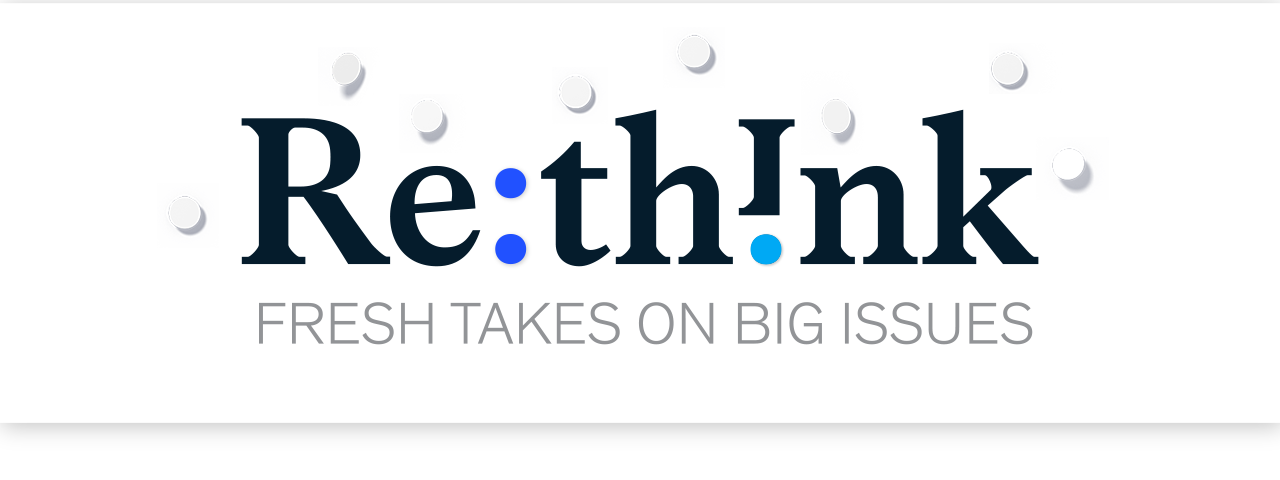


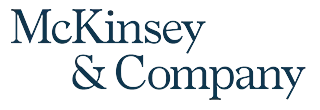



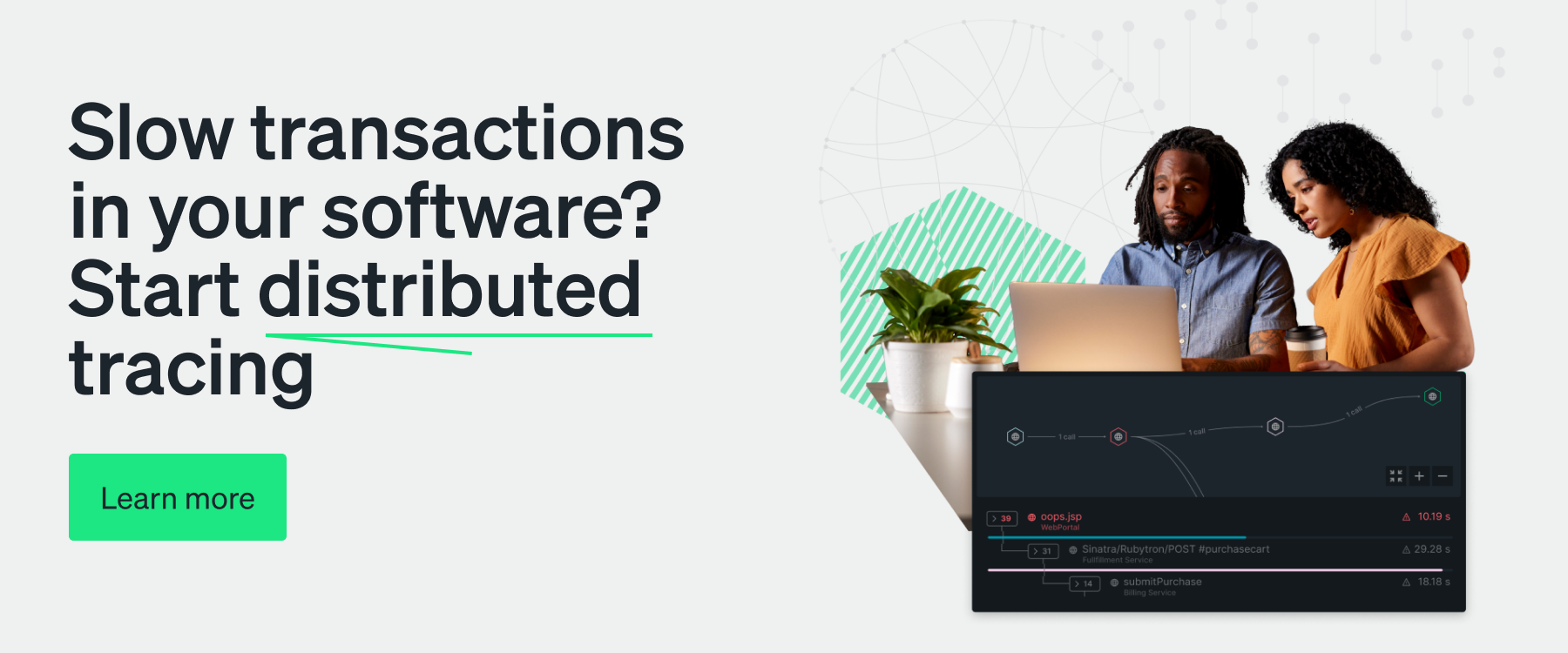








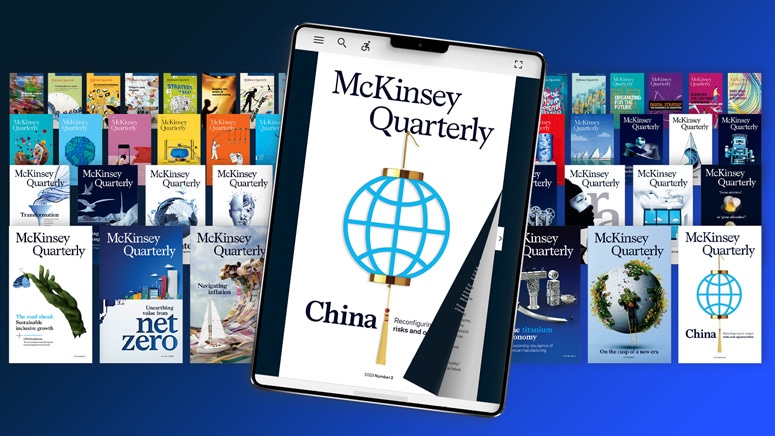

.png)











